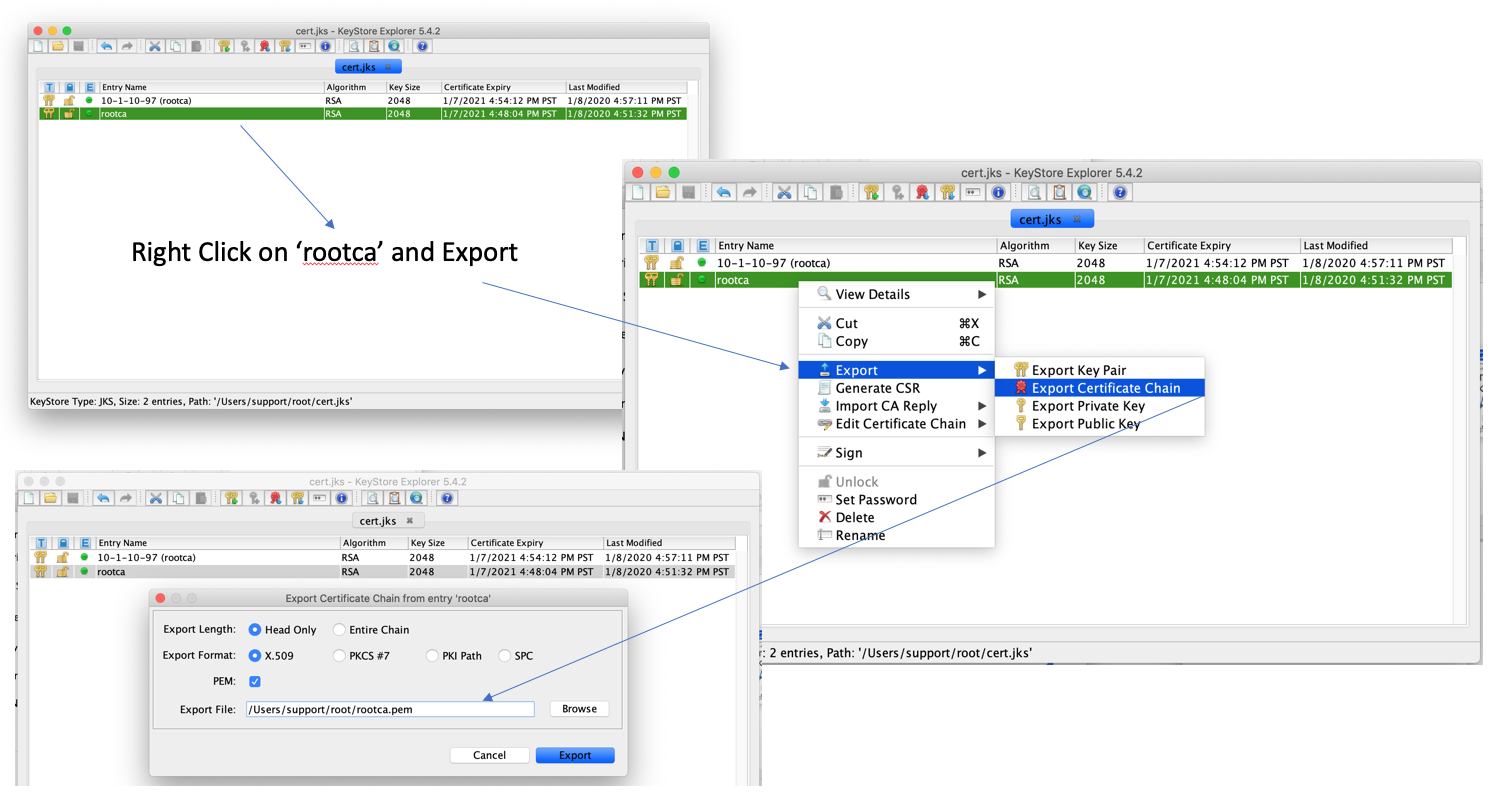

Delete the existing Legal Hold keystore file named cert and rename the cacerts.bcfks file to cert.

You can leave it as the default of "Server Name (Certificate Name)" or enter a friendly name. You will be prompted to Enter Alias for the certificate. To import, highlight a certificate and click the Import button.Ī.The certificates in a chain can be imported in any order. If more than one are shown, each of these certificates will need to be imported into the keystore to complete the certificate chain. The Certificate Hierarchy will show one or more certificate used by the authenticating server.► For connection to a global catalog server: ldaps://server FQDN:3289 ► For connection to a domain controller: ldaps://server FQDN:636 Notes: The SSL Host name should match the one defined in eDiscovery property e sa.nnectionURL and the SSL Port should match the one defined at the end of the eDiscovery property For SSL Port, enter the port used to connect to the domain controller or global catalog server. For SSL Host, enter the FQDN of the domain controller or global catalog server.ī. With the keystore file open, go to Examine > Examine SSL to query the domain controller or global catalog server used for LDAPs authentication for its associated certificate(s).Ī.
Keystore explorer 4.1.1 password#
This password must match the unencrypted password used in the eDiscovery property You will be prompted for the keystore password.

Copy a known-good cacerts keystore file to both the backup and working directories created in step 3.In this article, the folders are D:\LDAPs Temp\Cacerts Backup\ and D:\LDAPs Temp\Work Folder.

Create two subdirectories, one for backup copies of the keystore files and the other for keystore file modification.Create a directory to contain the certificate keystores that will be modified.
Keystore explorer 4.1.1 install#
Download and install KeyStore Exploreron the eDiscovery primary server following the defaults.This article provides a method to streamline that process and take out some of the guesswork using an open source tool called KeyStore Explorer. This process can be daunting if done using the keytool command line interface with certificates provided in various formats and naming conventions. Setting up secure LDAP (LDAPs) authentication for eDiscovery requires importing a valid certificate or certificate chain into the Java keystore file(s).


 0 kommentar(er)
0 kommentar(er)
